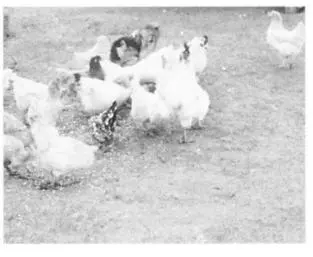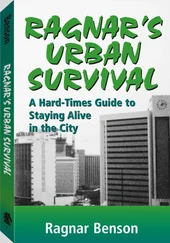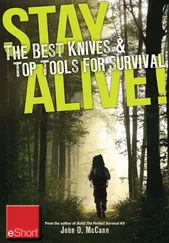Ragnar Benson - Ragnar's Urban Survival - A Hard-Times Guide to Staying Alive in the City
Здесь есть возможность читать онлайн «Ragnar Benson - Ragnar's Urban Survival - A Hard-Times Guide to Staying Alive in the City» весь текст электронной книги совершенно бесплатно (целиком полную версию без сокращений). В некоторых случаях можно слушать аудио, скачать через торрент в формате fb2 и присутствует краткое содержание. Год выпуска: 2009, ISBN: 2009, Жанр: Старинная литература, на английском языке. Описание произведения, (предисловие) а так же отзывы посетителей доступны на портале библиотеки ЛибКат.
- Название:Ragnar's Urban Survival: A Hard-Times Guide to Staying Alive in the City
- Автор:
- Жанр:
- Год:2009
- ISBN:1581600593
- Рейтинг книги:5 / 5. Голосов: 1
-
Избранное:Добавить в избранное
- Отзывы:
-
Ваша оценка:
- 100
- 1
- 2
- 3
- 4
- 5
Ragnar's Urban Survival: A Hard-Times Guide to Staying Alive in the City: краткое содержание, описание и аннотация
Предлагаем к чтению аннотацию, описание, краткое содержание или предисловие (зависит от того, что написал сам автор книги «Ragnar's Urban Survival: A Hard-Times Guide to Staying Alive in the City»). Если вы не нашли необходимую информацию о книге — напишите в комментариях, мы постараемся отыскать её.
Ragnar's Urban Survival: A Hard-Times Guide to Staying Alive in the City — читать онлайн бесплатно полную книгу (весь текст) целиком
Ниже представлен текст книги, разбитый по страницам. Система сохранения места последней прочитанной страницы, позволяет с удобством читать онлайн бесплатно книгу «Ragnar's Urban Survival: A Hard-Times Guide to Staying Alive in the City», без необходимости каждый раз заново искать на чём Вы остановились. Поставьте закладку, и сможете в любой момент перейти на страницу, на которой закончили чтение.
Интервал:
Закладка:
Available water seems to be the limiting factor in cities, much more than locating a patch of suitable topsoil.
Theft from one's survival garden in the city was a concern for me, personally. Out in the country garden theft is common. "Not to worry," the been there, done that committee says. "Most inner city people don't know a green bean from an edible pod pea," they say "(The) average city slicker will know large, typical vegetables, such a pumpkins and carrots, tended in neat, orderly, weed-free rows. But they fail miserably to recognize carrots or potatoes growing randomly in the ground."
City survival gardeners require very fast-growing, high-yield garden vegetables that average people won't recognize growing out in what seems like the wild. That these vegetables are also easy to process and are nutritious is another bonus. These are the garden items experts always suggest: potatoes, green beans, carrots, and zucchini.
Potatoes just barely made the list. Even though they produce more food per unit of land than any other crop on earth, they are relatively difficult to grow and store. Raising successive crops of potatoes on the same ground is a sure formula for devolution into nothing yields.
A multitude of fungal and bacterial diseases limit amateur potato production. Successfully keeping potato tubers for seed over the winter is never easy. Anyone who has ever kept spuds under the sink knows that even treated, commercial potatoes sprout and spoil easily. Potatoes are a 120-day crop in the northern hemisphere. They should be started as soon as the soil temperature reaches 54 degrees.
Potato tops are not good for anything except nourishing and supporting the tubers below. Few people will actually recognize a potato plant growing out by itself. Plant seed pieces about 4 inches deep. Sprouting occurs within 3 weeks. Soil should be mounded up around the plants to give the spuds more room in which to grow.
Carrots yield well, and they are fairly easy to raise and store. In most cases, mature carrots are simply left in the ground over the winter. Cover with 6 incl-.es of leaves, grass, and duff. Dig up as needed for the pot.
The devil with carrots is getting the seed sprouted in the spring. Their minuscule seeds are easily buried too deep and lost. I cover cover the seeds with a light layer of peat moss and a piece of heavy canvas fo.- 10 days to give them a chance to warm and sprout.
This leaves green beans and zucchini. Beans are excellent for city survivors because the mature pods can be left to dry on the plant when there are too many green beans to be otherwise processed. Production of food from 200 bean plants can be prodigious. Beans manufacture their own nitrogen fertilizer. Seeds saved from the last crop are always viable. When finally induced to sprout, beans do well on even very tired, poor soil.
Most zucchini are also open-pollinating, meaning seeds can be kept from one year to the next. Zucchini are a very short-term crop; it only takes around 53 days from planting to harvesting mature fruit. Everyone knows about the production ability of zucchini. In many places it is the subject of jokes. The biggest problem is storage; zucchini can be kept fresh for about 60 days, but after that they get moldy and deteriorate. Long-term storage entails freezing or canning.
All gardening, city or country, requires practice. Learning curves can be steep, but no two areas in the world are exactly the same relative to gardening techniques. City residents who believe they might someday become survivors can easily learn by placing a few hills of beans, zucchini, and potatoes out in the flower patch for practice. Few seeds and little space are required to experiment. Knowledge gained will be invaluable, especially when spread over a whole lifetime. Small-scale fooling around with garden vegetables leads to a continued supply of fresh seeds at the retreat.
I raised beans, carrots, and zucchini experimentally in a small plot across the street from a condo in which I lived in Boise, Idaho. There was abundant space in the lawns and flower beds among the high-rise buildings. But these flower beds were well tended and I risked having my little experimental garden mistaken for weeds and pulled up. Across the street I noticed a landowner who never mowed, pulled weeds, or fussed in any fashion with his yard. I planted there during the dark of night just a batch of seeds to see what would happen.
Nobody expects very much activity on the part of greenskeepers or gardeners during a city's collapse. No doubt, concerns about errant weeding would not be justified if everything else around has turned to worms. My experimental seeds sprouted and grew, but languished when I was unable to water them. Boise receives only 7 inches of rain per year, on average-it's really a desert.
City survivors could successfully learn hunting and gathering techniques on the job. They could also learn to garden in 3 to 4 years. By then, the emergency will have passed or you will have died of starvation.
RAISING LIVESTOCK
Livestock can be successfully raised in the deep inner city. Third-worlders do it all the time. It is generally small livestock, with goats being the largest. But, as with all animals, they are made of meat and will sustain life. My father raised rabbits and pigeons for 3 years; it was his and his brother's duty to keep the critters alive. This is probably more responsibility than most 12-year-olds in our society could assume.

Eight-week-old rabbits will be butchered in about 2 more weeks when they weigh 3 pounds.

Chickens and other domestic animals can be raised by city survivors.

Small animal pens and nest boxes are stored against the time of need by the city survivor.
Rabbits

Common pigeons are the perfect livestock for city survivors-they are prolific, hardy, and fly out to find their own food and water.
As mentioned earlier, three doe rabbits and a buck will produce sufficient young that survivors can count on at least two rabbit meals per week. Figure a litter of six to eight young weighing 3 pounds every 8 weeks throughout the year. Dad claimed he rebred their does 4 days after they gave birth. The does then started production of the next litter while still nursing the first litter. I never wanted to crowd my rabbits that much, but dad pointed out that this is the way it happens all by itself out in nature.
Rabbit hutches are roughly 20-x-18-x-30 inches deep, made of 1/2-inch chicken wire top and sides. The bottom is made of 1/2- x1-inch hardware cloth. Rabbits produce huge quantities of compost, which is useful in the garden. All this must fall through the hardware cloth on the bottom. Does like having a nest box, about 1 foot on a side and 18 inches deep. Cut a 4-inch access hole in front. The top should be hinged to open for inspection. Each buck and doe should have a hutch, plus one extra hutch per litter to keep them from weaning for 10 weeks, when they are butchered. Any older and they start breeding among themselves as well as consuming huge amounts of food, with little additional size gain to show for it.Figure one nest box per doe. The buck doesn't need one.
Читать дальшеИнтервал:
Закладка:
Похожие книги на «Ragnar's Urban Survival: A Hard-Times Guide to Staying Alive in the City»
Представляем Вашему вниманию похожие книги на «Ragnar's Urban Survival: A Hard-Times Guide to Staying Alive in the City» списком для выбора. Мы отобрали схожую по названию и смыслу литературу в надежде предоставить читателям больше вариантов отыскать новые, интересные, ещё непрочитанные произведения.
Обсуждение, отзывы о книге «Ragnar's Urban Survival: A Hard-Times Guide to Staying Alive in the City» и просто собственные мнения читателей. Оставьте ваши комментарии, напишите, что Вы думаете о произведении, его смысле или главных героях. Укажите что конкретно понравилось, а что нет, и почему Вы так считаете.











